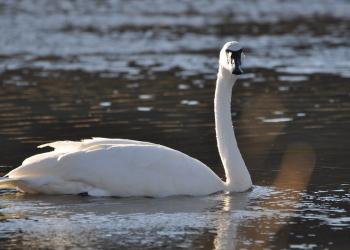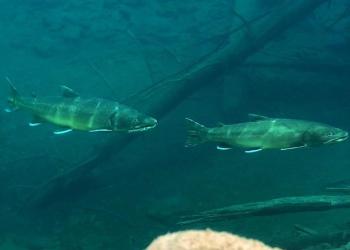Animals
Southwest Montana's diverse habitats provide a home for a wide range of mammals, birds, reptiles, amphibians, fish, and invertebrates.
Mammals
Iconic species that roam the landscape:
- Grizzly and black bears - remember these apex predators require proper food and carcass storage.
- Moose and elk - common in wetlands, forest, and grassland, these large herbivores are often seen at dawn and dusk.
- Mountain lions and wolves - apex predators that are elusive and are not often seen by people.
- Bighorn sheep and mountain goats - these animals are adapted to rocky cliffs and alpine terrain.
- Beavers and otters - essential to wetland health, shaping waterways, and providing habitat to fish and birds.
Birds
Over 200 bird species can be found on the Beaverhead-Deerlodge, from raptors to waterfowl:
- Golden and bald eagles - majestic raptors that soar above rivers and valleys.
- Great gray owls and northern goshawks - raptors of the forest.
- Trumpeter swans, great blue herons and sandhill cranes - iconic wetland birds, often seen in marshy areas, rivers, streams or lakes.
- Clark's nutcracker and mountain bluebird - found in the montane and alpine forests.
Reptiles and amphibians
Though less common in Montana's cool climate, the region is home to several species:
- Columbia spotted and boreal chorus frogs - found in wetland areas.
- Painted turtle - found in slow moving water and ponds.
- Gartersnakes - the most widespread snake in the region.
- There is only one poisonous snake in Montana, the prairie rattlesnake.
Fish
Pristine mountain streams and alpine lakes provide habitat for fish:
- Westslope cutthroat trout - Montana's state fish.
- Bull trout - a threatened species requiring cold, clean water.
- Mountain whitefish and Arctic grayling - indicators of aquatic ecosystem health.
Invertebrates
A vast array of insects, spiders, and other invertebrates support the forest's food web. Notable species include:
- Pollinators - bees, butterflies, and months essential for plant reproduction.
- Dragonflies and mayflies - kay indicators of water quality.
- Western bumblebee - a declining species vital for wildflower pollination.


















